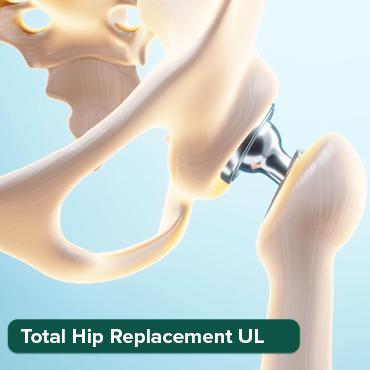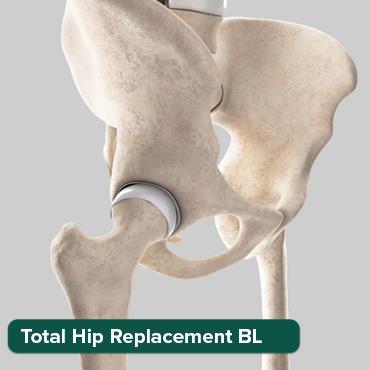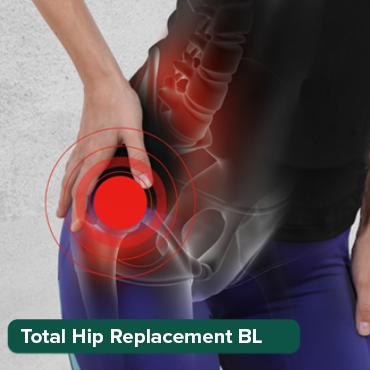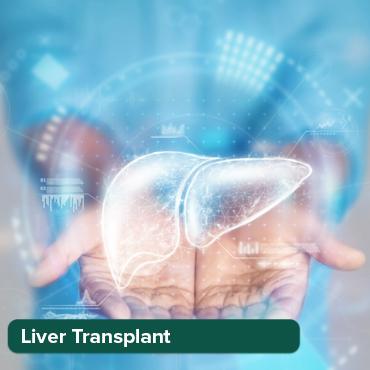
Do’s and Don’ts During Recovery After Joint Replacement's Healthtrip Tips
16 Sep, 2025
 Healthtrip
Healthtrip- Choosing the Right Recovery Location: Hospital vs. Home
- Essential Do's in the Initial Recovery Phase
- Common Don'ts to Avoid Immediately Post-Surgery
- Safe and Effective Exercises for Joint Replacement Recovery
- The Importance of Nutrition in Healing
- Recognizing and Addressing Potential Complications
- Long-Term Do's for Maintaining Joint Health
- Conclusion: Your Journey to a Successful Recovery
Do's After Joint Replacement
Rest is paramount immediately following your joint replacement surgery. Imagine your body is a construction site; it needs time to rebuild. Don't push yourself too hard in the initial weeks. Gentle movements are encouraged, but avoid strenuous activities that could strain the new joint. Your doctor, perhaps at Vejthani Hospital in Bangkok, will provide specific guidelines tailored to your individual needs, and it's absolutely crucial to adhere to them. Proper wound care is also essential to prevent infection. Keep the incision site clean and dry, following the instructions provided by your medical team. Look out for any signs of infection, such as increased redness, swelling, or drainage, and let your doctor know immediately. Embrace physical therapy, it is your new best friend. A structured rehabilitation program, often available at institutions like Helios Klinikum Erfurt, is vital for regaining strength, flexibility, and range of motion in the replaced joint.Transform Your Beauty, Boost Your Confidence
Find the right cosmetic procedure for your needs.

We specialize in a wide range of cosmetic procedures

Don'ts After Joint Replacement
One common mistake people make is trying to do too much too soon. Your eagerness is understandable but resist the urge to overexert yourself. Avoid lifting heavy objects, engaging in high-impact activities like running or jumping, or twisting the joint excessively. These actions can delay healing and potentially damage the new joint. You might be tempted to skip your prescribed medications once you start feeling better, but don't! Pain medications and blood thinners play a crucial role in managing pain and preventing blood clots during the early stages of recovery. Follow your doctor's instructions carefully, and don't hesitate to contact them if you have any concerns about side effects. Another critical don't is neglecting your emotional well-being. Joint replacement recovery can be emotionally challenging. You may experience frustration, anxiety, or even sadness as you adjust to your new limitations and navigate the healing process. Remember to reach out to your support network, including family, friends, or a therapist if you're struggling. Mental well-being is just as important as physical recovery. Healthtrip can connect you with options for post surgical care at quality destinations like the NMC Specialty Hospital, Al Nahda, Dubai.Healthtrip Tips for a Smooth Recovery
Pre-Surgery Preparation
Start preparing for your surgery well in advance. This includes optimizing your physical health by engaging in light exercises recommended by your physician and maintaining a balanced diet. A stronger you going into surgery can mean a smoother recovery coming out. Mentally preparing yourself is just as important; understand the process, potential challenges, and set realistic expectations, perhaps with guidance from professionals associated with Quironsalud Hospital Murcia. This can help reduce anxiety and promote a positive mindset. At Healthtrip, we can assist in arranging consultations with specialists like those associated with Mount Elizabeth Hospital, Singapore to manage all your pre-operative stress.Post-Operative Care
Following discharge from the hospital, create a comfortable and safe home environment. Remove any tripping hazards, such as loose rugs or cords. Ensuring that frequently used items are within easy reach to minimize bending or stretching is important. Invest in assistive devices, such as a grabber or long-handled shoehorn, to further reduce strain on your joint. Regular follow-up appointments with your surgeon and physical therapist, such as those available via Healthtrip at clinics like London Medical, are crucial for monitoring your progress and addressing any concerns. Adhering to their recommendations is key to achieving optimal outcomes.Diet and Nutrition
A balanced diet rich in protein, vitamins, and minerals is essential for tissue repair and overall healing. Focus on consuming plenty of fruits, vegetables, lean protein sources, and whole grains. Stay well-hydrated by drinking plenty of water throughout the day. Maintaining a healthy weight is also important to reduce stress on the joints. Consider consulting with a registered dietitian, such as those we can help connect you with at Healthtrip associated hospitals like Memorial Bahçelievler Hospital, to develop a personalized nutrition plan tailored to your needs.Choosing the Right Recovery Location: Hospital vs. Home
Deciding where to recover after joint replacement surgery is a pivotal first step in your healing journey. It's a deeply personal choice, influenced by factors such as your overall health, the extent of your surgery, the level of support available to you at home, and of course, your personal preferences. Hospitals, like Fortis Shalimar Bagh and Saudi German Hospital Cairo, Egypt, offer the advantage of immediate access to medical professionals, specialized equipment, and comprehensive pain management strategies. Imagine waking up after surgery knowing that a team of nurses and doctors are just a call away, ready to address any concerns or complications that might arise. This can be particularly reassuring if you have pre-existing health conditions or if you're prone to anxiety about your health. You also have access to physical therapists who will guide you through the initial stages of rehabilitation, ensuring you're starting on the right foot. For some, the structured environment and constant monitoring of a hospital provide a sense of security that can be invaluable during those early, vulnerable days. Consider this: the peace of mind knowing you're in expert hands can significantly reduce stress, which in turn, can positively impact your body's ability to heal. Healthtrip can assist you in finding the best hospitals for your joint replacement surgery, ensuring a smooth and well-supported recovery.
Most popular procedures in India
Total Hip Replacemen
Upto 80% off
90% Rated
Satisfactory

Total Hip Replacemen
Upto 80% off
90% Rated
Satisfactory

Total Hip Replacemen
Upto 80% off
90% Rated
Satisfactory

ASD Closure
Upto 80% off
90% Rated
Satisfactory

Liver Transplant Sur
Upto 80% off
90% Rated
Satisfactory

On the other hand, recovering at home offers its own unique set of benefits. There's the undeniable comfort of being in familiar surroundings, surrounded by your own things, and perhaps most importantly, close to loved ones. The ability to rest in your own bed, eat familiar foods, and follow your own routine can contribute significantly to your emotional well-being, which is an often-overlooked aspect of recovery. Studies have shown that patients who recover at home often report higher levels of satisfaction and a greater sense of control over their healing process. However, a successful home recovery requires careful planning and preparation. You'll need to ensure that your home is safe and accessible, with modifications like grab bars in the bathroom, a raised toilet seat, and removal of any tripping hazards. You'll also need a strong support system in place, whether it's family members, friends, or professional caregivers, who can assist with daily tasks such as meal preparation, bathing, and transportation to follow-up appointments. Healthtrip can help connect you with resources for home healthcare and rehabilitation services, ensuring you have the support you need to recover comfortably and safely in your own environment. Whether you choose the structured environment of a hospital or the familiar comfort of home, the key is to make an informed decision that aligns with your individual needs and circumstances.
Ultimately, the best recovery location is the one where you feel most comfortable, safe, and supported, paving the way for a smoother and more successful healing journey.
Essential Do's in the Initial Recovery Phase
The initial recovery phase following joint replacement surgery, typically the first few weeks, is a critical period that sets the stage for long-term success. During this time, adhering to your doctor's instructions is paramount. This isn't just about ticking boxes; it's about actively participating in your body's healing process. Think of it as partnering with your surgeon and physical therapist to rebuild your strength and mobility. One of the most important "do's" is diligently following your pain management plan. Pain control is not just about comfort; it's essential for allowing you to participate actively in your rehabilitation exercises. Uncontrolled pain can hinder your progress, leading to muscle stiffness and decreased range of motion. Your doctor will likely prescribe pain medication, but don't hesitate to discuss alternative pain management strategies, such as ice packs, elevation, and relaxation techniques. Regular icing can significantly reduce swelling and inflammation, while keeping your leg elevated helps improve circulation and reduce pain. Remember, managing pain effectively is a crucial step in regaining your independence and returning to your daily activities. Healthtrip can assist you in finding pain management specialists and resources to help you navigate this critical phase.
Another essential "do" is starting physical therapy as soon as your doctor recommends it. Early mobilization is vital for preventing stiffness, improving circulation, and regaining strength in the muscles surrounding your new joint. Your physical therapist will guide you through a series of exercises designed to gradually increase your range of motion and build strength. These exercises may seem simple at first, but they are crucial for restoring proper joint function. Don't be tempted to push yourself too hard, too soon. Listen to your body and stop if you experience any sharp pain. Consistency is key, so make sure you attend all of your scheduled physical therapy sessions and diligently perform your home exercises. Remember, rehabilitation is a marathon, not a sprint. With patience, perseverance, and the guidance of your physical therapist, you'll gradually regain your strength and mobility. To facilitate your recovery at home, ensure you have any necessary medical equipment, such as a walker, crutches, a raised toilet seat, or a shower chair. These aids can make daily tasks easier and safer, allowing you to focus on your recovery. Healthtrip can connect you with reputable suppliers of medical equipment and assist you in arranging for delivery to your home.
By diligently following your doctor's instructions, actively managing your pain, and embracing physical therapy, you'll be well on your way to a successful recovery from joint replacement surgery.
Common Don'ts to Avoid Immediately Post-Surgery
Just as important as knowing what to do after joint replacement surgery is understanding what *not* to do. The immediate post-operative period is a delicate time, and certain actions can significantly hinder your healing and increase the risk of complications. One of the most common "don'ts" is ignoring your doctor's weight-bearing instructions. Whether you're advised to avoid putting any weight on your leg, bear only partial weight, or bear weight as tolerated, it's crucial to adhere to these guidelines meticulously. Putting too much weight on your new joint too soon can disrupt the healing process, damage the implant, and potentially lead to the need for further surgery. Use your assistive devices, such as crutches or a walker, as directed by your physical therapist, and don't be tempted to "test" your leg before it's ready. Remember, patience is key during this phase. Your body needs time to heal and strengthen, and rushing the process can have serious consequences. Healthtrip can help you find reliable sources for mobility aids and ensure you have the support you need to follow these instructions carefully.
Another crucial "don't" is neglecting wound care. Keeping your incision clean and dry is essential for preventing infection. Follow your doctor's instructions for dressing changes, and be vigilant for any signs of infection, such as increased redness, swelling, drainage, or fever. If you notice any of these symptoms, contact your doctor immediately. Avoid soaking in tubs or swimming pools until your incision is fully healed, as this can increase the risk of infection. Showering is generally permitted, but be sure to pat the incision dry thoroughly afterwards. A simple infection can quickly escalate into a serious complication, so it's always better to err on the side of caution. Moreover, avoid crossing your legs or bending at the hip more than 90 degrees, as these movements can dislocate your new joint, especially in the early weeks after surgery. Your physical therapist will teach you safe ways to move and perform daily activities, so pay close attention to their instructions. Remember to maintain proper posture and avoid slouching or twisting your body. These seemingly small precautions can make a big difference in preventing complications and ensuring a smooth recovery. Avoid overexertion for first few weeks. Healthtrip's network of healthcare providers offers guidance on wound management and exercises that are safe and suitable for your recovery stage, ensuring peace of mind.
By avoiding these common "don'ts," you'll minimize your risk of complications and pave the way for a faster, more comfortable recovery from joint replacement surgery.
Also Read:
Safe and Effective Exercises for Joint Replacement Recovery
After undergoing joint replacement surgery, embarking on a structured exercise program is paramount for a successful recovery. These exercises are meticulously designed to restore range of motion, rebuild strength, and improve overall function of the new joint. However, it's crucial to approach this phase with patience and under the guidance of a physical therapist. They will tailor a program that aligns with your individual needs and progress, ensuring you don't overexert yourself or risk setbacks. The initial exercises often focus on gentle movements to promote circulation and reduce stiffness. Ankle pumps, where you repeatedly point and flex your feet, are a great starting point to prevent blood clots. Quadriceps sets, involving tightening the thigh muscles, help maintain strength in the legs. Heel slides, where you gently slide your heel towards your buttocks, gradually increase knee flexion. Remember, consistency is key, and even small, controlled movements contribute significantly to your recovery. Always listen to your body and avoid pushing through sharp pain. These early exercises lay the foundation for more advanced activities as you heal.
Building Strength Gradually
As your recovery progresses, the focus shifts towards strengthening the muscles surrounding the replaced joint. This involves incorporating exercises that target the muscles that support the joint, providing stability and improving function. For knee replacements, exercises like straight leg raises, short arc quads, and hamstring curls become essential. These exercises can initially be performed without weights, gradually adding resistance as you get stronger. For hip replacements, exercises such as hip abduction (moving your leg away from your body), hip adduction (moving your leg towards your body), and glute bridges help strengthen the hip abductors and gluteal muscles, crucial for stability during walking and other activities. Remember, proper form is more important than lifting heavy weights. Maintaining good posture and controlled movements prevents strain and maximizes the effectiveness of the exercises. Work closely with your physical therapist to ensure you're performing exercises correctly and progressing at a safe pace. They can also provide modifications and alternative exercises based on your specific limitations and pain levels. Consider exploring rehabilitation options abroad through Healthtrip, where facilities like Vejthani Hospital in Bangkok or Fortis Memorial Research Institute in Gurgaon offer comprehensive post-operative care and rehabilitation programs.
Range of Motion and Flexibility
Restoring full range of motion is another crucial aspect of joint replacement recovery. This involves performing exercises that stretch and mobilize the joint, preventing stiffness and improving flexibility. For knee replacements, exercises such as stationary cycling and gentle stretching of the hamstrings and calf muscles are beneficial. For hip replacements, exercises like hip flexor stretches, piriformis stretches, and gentle rotation exercises help improve flexibility and reduce tightness. Yoga and Pilates can also be incorporated into your routine, focusing on poses that promote joint mobility and flexibility, but always under the guidance of a qualified instructor who is aware of your surgical history. Regular stretching not only improves range of motion but also reduces pain and stiffness, making daily activities easier and more comfortable. Remember to hold each stretch for 20-30 seconds, breathing deeply and relaxing into the stretch. Avoid bouncing or forcing the stretch, as this can cause injury. As you regain flexibility, your ability to perform everyday tasks like walking, climbing stairs, and bending down will improve significantly. Healthtrip can connect you with rehabilitation centers that specialize in post-joint replacement recovery, ensuring you receive the expert care and guidance you need to achieve your goals.
Also Read:
The Importance of Nutrition in Healing
Nutrition plays a pivotal role in the healing process following joint replacement surgery. Your body requires an increased intake of specific nutrients to repair tissues, reduce inflammation, and fight off infection. A well-balanced diet rich in protein, vitamins, and minerals is essential for optimal recovery. Protein is the building block of tissues and is crucial for repairing muscles, ligaments, and bones. Aim to include lean protein sources such as chicken, fish, beans, lentils, and tofu in your daily meals. Vitamins and minerals, particularly vitamin C, vitamin D, calcium, and zinc, support various aspects of the healing process. Vitamin C aids in collagen production, which is essential for wound healing. Vitamin D and calcium are vital for bone health and strength. Zinc supports immune function and helps prevent infection. Incorporate a variety of fruits, vegetables, and whole grains into your diet to ensure you're getting a broad spectrum of essential nutrients. For personalized nutritional guidance, consider consulting a registered dietitian or nutritionist who can assess your individual needs and create a tailored meal plan to support your recovery. Remember, what you eat directly impacts your body's ability to heal and regain strength.
Foods to Promote Healing
Certain foods possess properties that can actively promote healing and reduce inflammation after joint replacement surgery. Foods rich in omega-3 fatty acids, such as salmon, tuna, walnuts, and flaxseeds, have anti-inflammatory effects that can help reduce pain and swelling. Turmeric, a spice commonly used in Indian cuisine, contains curcumin, a potent anti-inflammatory compound that can aid in pain relief and tissue repair. Berries, such as blueberries, strawberries, and raspberries, are packed with antioxidants that protect cells from damage and promote healing. Green leafy vegetables, such as spinach, kale, and collard greens, are excellent sources of vitamins, minerals, and antioxidants that support overall health and healing. Probiotic-rich foods like yogurt, kefir, and sauerkraut promote gut health, which is essential for immune function and nutrient absorption. Stay adequately hydrated by drinking plenty of water throughout the day, as dehydration can impair healing. Avoid processed foods, sugary drinks, and excessive amounts of alcohol, as these can hinder the healing process and increase inflammation. Remember to focus on whole, unprocessed foods that provide your body with the nutrients it needs to recover effectively. Healthtrip can assist in finding wellness retreats and facilities with comprehensive nutritional support, such as those offered at Bangkok Hospital or Saudi German Hospital Cairo, focusing on optimizing your diet for post-operative recovery.
Supplements and Medications
In addition to a healthy diet, certain supplements may be beneficial in supporting joint replacement recovery. However, it's crucial to discuss any supplements you're considering with your doctor or pharmacist, as they can interact with medications or have adverse effects. Calcium and vitamin D supplements may be recommended to promote bone health, especially if you have a history of osteoporosis or low bone density. Vitamin C supplements can aid in collagen production and wound healing. Iron supplements may be necessary if you're anemic or have experienced significant blood loss during surgery. Glucosamine and chondroitin are supplements that are often used to support joint health, but their effectiveness is still debated. Your doctor may also prescribe medications to manage pain, prevent blood clots, and prevent infection. Take all medications as prescribed and follow your doctor's instructions carefully. Be aware of potential side effects of medications and report any concerns to your doctor. Remember that supplements should not replace a healthy diet, but rather complement it. Focus on obtaining most of your nutrients from whole foods and use supplements only when necessary and under the guidance of a healthcare professional. Healthtrip can provide information on hospitals like Hisar Intercontinental Hospital in Istanbul that offer comprehensive post-operative care, including nutritional consultations and medication management.
Also Read:
Recognizing and Addressing Potential Complications
While joint replacement surgery is generally safe and effective, it's essential to be aware of potential complications that can arise during the recovery process. Early detection and prompt treatment are crucial for minimizing the impact of these complications and ensuring a successful outcome. Infection is a serious complication that can occur at any time after surgery, although it's more common in the early weeks. Signs of infection include increased pain, swelling, redness, warmth, and drainage from the incision site, as well as fever, chills, and fatigue. Blood clots, such as deep vein thrombosis (DVT) or pulmonary embolism (PE), are another potential complication. DVT occurs when a blood clot forms in a deep vein, usually in the leg, while PE occurs when a blood clot travels to the lungs. Signs of DVT include pain, swelling, redness, and warmth in the leg, while signs of PE include shortness of breath, chest pain, dizziness, and coughing up blood. Dislocation of the new joint can also occur, particularly in the early weeks after surgery. Signs of dislocation include sudden pain, instability, and an inability to move the joint. Nerve damage can occur during surgery, resulting in numbness, tingling, or weakness in the affected limb. Loosening of the implant can occur over time, leading to pain, instability, and the need for revision surgery. Remember to contact your doctor immediately if you experience any of these symptoms.
When to Seek Immediate Medical Attention
Knowing when to seek immediate medical attention after joint replacement surgery is crucial for preventing serious complications. If you experience any of the following symptoms, seek immediate medical attention: High fever (over 101°F or 38.3°C), persistent chills, increasing pain that is not relieved by pain medication, significant swelling or redness around the incision site, drainage of pus or fluid from the incision site, shortness of breath, chest pain, dizziness, coughing up blood, sudden loss of function in the affected limb, signs of a stroke (such as slurred speech, facial drooping, or weakness on one side of the body), severe allergic reaction (such as hives, difficulty breathing, or swelling of the face, lips, or tongue). Don't hesitate to contact your doctor or go to the nearest emergency room if you're concerned about your health. Early intervention can prevent minor complications from becoming serious problems. Before undergoing surgery, discuss potential complications with your surgeon and ask about the warning signs to watch out for. Also, inquire about the hospital's protocols for managing complications and the availability of specialized care if needed. Healthtrip can provide you with a list of accredited hospitals like Mount Elizabeth Hospital in Singapore or Memorial Sisli Hospital in Istanbul known for their excellent post-operative care and management of complications.
Preventive Measures and Long-Term Monitoring
While it's impossible to eliminate all risks, there are several preventive measures you can take to minimize the likelihood of complications after joint replacement surgery. Follow your doctor's instructions carefully regarding medication, wound care, and activity restrictions. Practice good hygiene to prevent infection, including washing your hands frequently and keeping the incision site clean and dry. Use assistive devices, such as crutches or walkers, as recommended by your physical therapist to protect the new joint and prevent falls. Maintain a healthy weight to reduce stress on the joint. Avoid smoking, as it can impair healing and increase the risk of complications. Attend all follow-up appointments with your surgeon and physical therapist to monitor your progress and address any concerns. Long-term monitoring is essential for detecting potential problems early, such as implant loosening or infection. Your doctor may recommend regular X-rays to assess the condition of the implant and surrounding bone. Be proactive in reporting any changes in your symptoms or function to your doctor. Remember that your health is your responsibility, and taking preventive measures and being vigilant about potential complications can significantly improve your outcome after joint replacement surgery. Healthtrip can connect you with healthcare providers and facilities like Quironsalud Hospital Murcia that offer comprehensive long-term monitoring programs for joint replacement patients, ensuring your continued well-being.
Also Read:
Long-Term Do's for Maintaining Joint Health
Maintaining the health and function of your replaced joint over the long term requires a proactive and consistent approach. While joint replacement surgery can significantly improve your quality of life, it's essential to adopt lifestyle habits that support the longevity of your new joint. Regular exercise, maintaining a healthy weight, and protecting your joint from injury are key components of a long-term maintenance plan. Choose low-impact activities that are gentle on your joints, such as walking, swimming, cycling, and water aerobics. Avoid high-impact activities, such as running, jumping, and contact sports, which can put excessive stress on the joint. Strengthen the muscles surrounding the joint to provide stability and support. Continue to perform exercises recommended by your physical therapist, such as quadriceps sets, hamstring curls, hip abduction, and glute bridges. Maintain a healthy weight to reduce stress on the joint. Even losing a few pounds can make a significant difference in reducing pain and improving function. Protect your joint from injury by avoiding activities that involve twisting, pivoting, or repetitive movements. Use assistive devices, such as canes or walkers, as needed to maintain balance and stability.
Lifestyle Adjustments for Joint Longevity
Making certain lifestyle adjustments can significantly contribute to the longevity and function of your replaced joint. Review your home and work environments and make modifications to reduce strain on your joints. Use assistive devices, such as grab bars in the bathroom, raised toilet seats, and long-handled reachers, to make daily tasks easier and safer. Wear supportive shoes with good arch support to cushion your joints and improve your balance. Avoid wearing high heels or shoes that are too flat, as these can put excessive stress on your joints. Practice good posture to maintain proper alignment and reduce strain on your spine and joints. Sit and stand with your shoulders back, your chest lifted, and your core engaged. Use proper lifting techniques to avoid straining your back and joints. Bend your knees and keep your back straight when lifting heavy objects. Avoid twisting or turning while lifting. Get enough sleep to allow your body to repair and heal. Aim for 7-8 hours of sleep per night. Manage stress to reduce muscle tension and inflammation. Practice relaxation techniques, such as deep breathing, meditation, or yoga. Maintain a positive attitude and stay engaged in activities you enjoy to improve your overall well-being.
Regular Check-ups and Monitoring
Regular check-ups and monitoring are essential for detecting potential problems early and ensuring the long-term success of your joint replacement. Schedule follow-up appointments with your surgeon or orthopedic specialist at least once a year, or more frequently if you experience any changes in your symptoms or function. During these appointments, your doctor will assess the condition of your joint, evaluate your range of motion and strength, and order X-rays to monitor the implant's position and stability. Be proactive in reporting any new or worsening symptoms to your doctor, such as pain, swelling, stiffness, instability, or clicking sounds. Discuss any concerns you have about your joint replacement with your doctor and ask any questions you may have. Follow your doctor's recommendations regarding medication, exercise, and lifestyle adjustments. Be aware of the signs and symptoms of infection and seek immediate medical attention if you suspect an infection. Consider joining a support group for people who have undergone joint replacement surgery. Sharing your experiences and learning from others can provide valuable emotional support and practical advice. Remember that long-term care of your replaced joint is an investment in your health and well-being. By following these long-term do's, you can maximize the lifespan of your joint replacement and enjoy an active and fulfilling life. Healthtrip can assist you in finding specialists for follow up care, for example at NMC Specialty Hospital, Al Nahda, Dubai or Helios Klinikum Erfurt, ensuring continuous support in your journey to sustained joint health.
Also Read:
Conclusion: Your Journey to a Successful Recovery
Your journey to a successful recovery after joint replacement surgery is a marathon, not a sprint. It requires patience, commitment, and a proactive approach. By understanding the essential do's and don'ts in the early stages, engaging in safe and effective exercises, prioritizing nutrition, and recognizing potential complications, you can optimize your healing process and improve your long-term outcome. Remember that everyone's recovery is unique, and it's important to listen to your body and progress at your own pace. Don't compare yourself to others and don't get discouraged by setbacks. Focus on making small, consistent improvements each day. Surround yourself with a supportive network of family, friends, and healthcare professionals. Their encouragement and guidance can make a significant difference in your recovery journey. Celebrate your milestones, no matter how small. Acknowledge your progress and take pride in your accomplishments. Stay positive and maintain a hopeful outlook. A positive attitude can have a profound impact on your physical and emotional well-being. Remember that joint replacement surgery is a life-changing procedure that can significantly improve your quality of life. By following these guidelines and staying committed to your recovery, you can achieve your goals and enjoy an active, fulfilling, and pain-free life. Explore options with Healthtrip to find the best facilities and professionals to guide you on this journey, whether it is in Saudi German Hospital Alexandria, Egypt or Vejthani Hospital in Bangkok.
Wellness Treatments
Give yourself the time to relax
Lowest Prices Guaranteed!

Lowest Prices Guaranteed!







